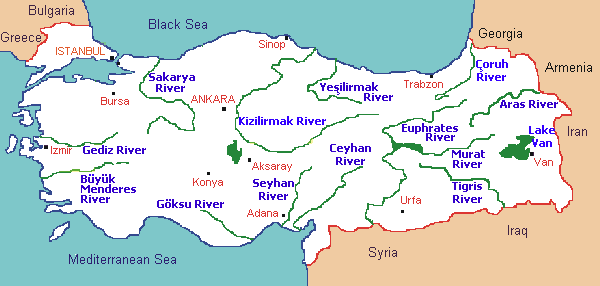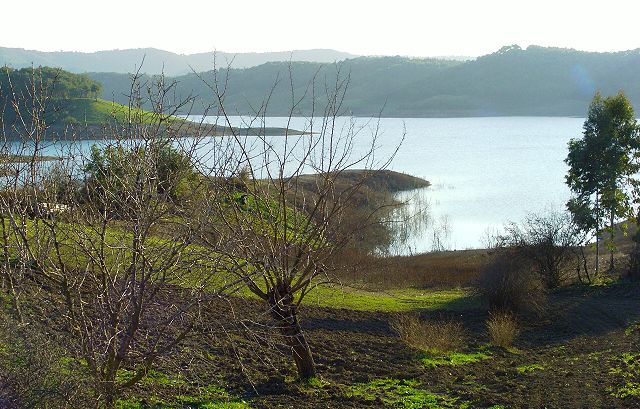
| SARUS / SEYHAN RIVER
Sarus / Seyhan River
Sarus / Seyhan River
Native name Saros
Seyhan River flowing through Adana Location :
Country
: Turkey
Physical
characteristics :
Basin
features :
The Seyhan River (formerly written Seihan, Sihun; ancient name: Ancient Greek: Sáros), alternatively known as Sarus (or in Turkish as Sarus Su), is the longest river of Cilicia and the longest of Turkey that flows into the Mediterranean Sea. The river is 560 km and flows southwest from its headwaters in the Tahtali-Mountains (in Sivas and Kayseri provinces) in the Anti-Taurus Mountains to the Mediterranean Sea via a broad delta. Its main tributaries are Zamanti and Göksu, which unite in Aladag, Adana to form the Seyhan River. The Zamanti River originates from the Uzun Plateau in Pinarbasi, Kayseri and crosses Tomarza, Develi and Yahyali districts in Kayseri.
Its sources were reported being in the Taurus Mountains in Cataonia. It flowed through Cappadocia by the town of Comana, then through Cilicia. It is noted by numerous ancient authors including Livy, Xenophon, Procopius, Strabo, Ptolemy, Appian, Pliny the Elder, and Eustathius of Thessalonica who erroneously calls it Sinarus.
50 km from its mouth, Seyhan River flows through the city of Adana, the only settlement situated on the river. Several bridges and footbridges cross the river in Adana including the Stone Bridge, a 2nd-century Roman bridge. Ancient city of Augusta was also situated on the river, corresponding today to the east side of the Çatalan reservoir. The river meets the Mediterranean Sea at Cape Deli.
History :
River
Seyhan seen from Çatalan Bridge
Originally, the River Sarus flowed from the mountains, became the Seyham River whilst passing through Cilicia and then onwards to the Mediterranean Sea.
In 2009, a total of 33 fishes were listed as being found in the Seyhan River, including 29 native, 3 introduced and 4 endemic species. Eight amphibians were listed and two of them (Rana holtzi and Triturus vittatus cilicensis) are known to be endemic to the river.
The major Seyhan Dam upstream of Adana serves for irrigation, hydroelectric power, and flood control. Yedigöze, Çatalan and Kavsak Bendi are the other dams on Seyhan River which also serve the same purposes. The river is currently under extensive development for hydroelectric power and irrigation.
Source :
https://en.wikipedia.org/wiki/Seyhan_River |


.jpg)
